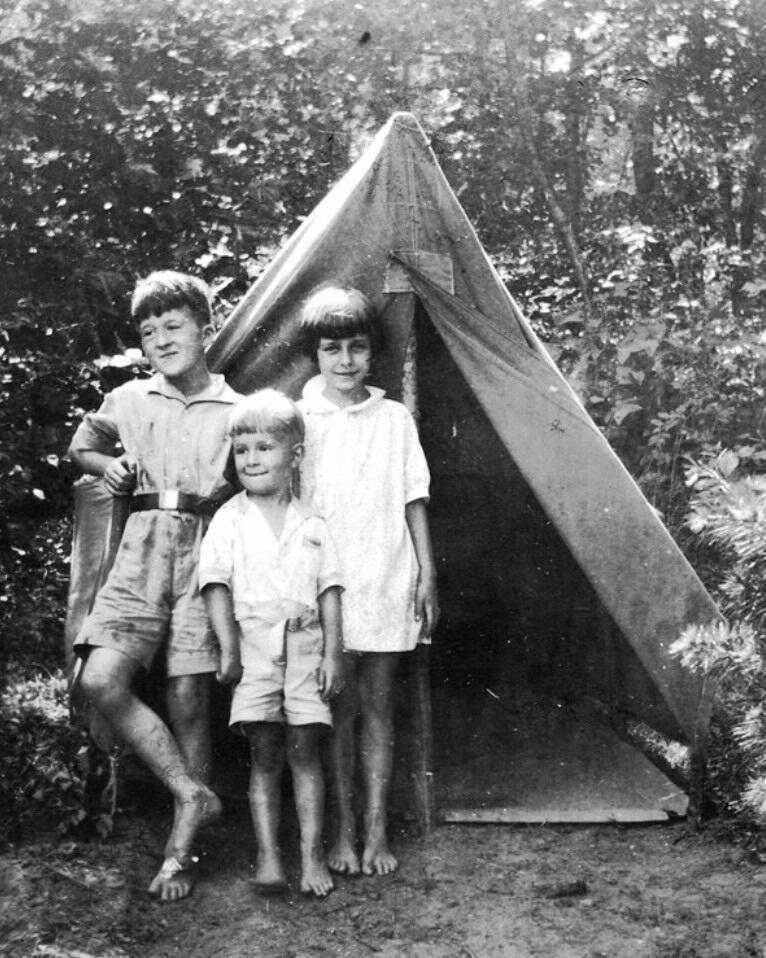
American Family Camping

Figure 1.--This family snapshot shows three children enjoying family camping. The children are standing in front of their tent out in the country. It was taken in a wooden area near Asheville, North Carolina. The photo is undated, but it looks like the 1920s to us. A lot of families took advantage of World war I Arny surplus.
|
|
We are unsure just when family camping began. The get back to nature ethos is probably dated with Henry David Thoreau and Walden (Life in the Woods) (1854). But most Americans for most of the 19th century were primsrily interested in getting away from nature and enjoying the comforts of the city. But American cities changed with theindustrial revolution. And we see the growth of suburbs, in part a get back to nature response to the growth of large industrial cities. The American summer camp movement began to develop in the late-19th century. The idea here was primarily to get children out in the fresh air and sushine, at first boys and then girls as well. Family camping was more complicated. Children could be sent by train and later busses to camps in the country with prepared facilities. Family camping with tents and equipment required transport. And horse-draw transport during the 19th century was not suitablle. Not only was it slow, but few city people had horses and buckboards. As with many aspects of American life, Henry Ford dramatically changed this. The Model-T (1908) gave mobility to the Americam family. And not only wealthy families. Wealthy families summered in country homes. The average worker of course did not have a country home. They could, however, afford a Model-T. And this meant the fmily was mobile, although roads outside the cities were at first rudimentary. Another factor was paid vacations which after the turn-of-the 20th century became increasingly prevalent. We are not entirely sure when the first family camping trips began, probably in the 1910s. Here the existence of the Boy Scout and YMCA movement were powerful examples. We know there was family camping after World War I (1914-18) as there are many examples in the photographic record. The same did not occur in Europe, primarily because European manufacturers did not create a car within the buying power of the average worker. And we not only see families setting up tents in the country, but we begin to see trailers bringing the comforts of the city with them. We also begin to see prepared camp sites for families. Today family vacation are an American instituio enjoyed by large numbers of families.
HBC

Navigate the Boys' Historical Clothing Web Site:
[Return to theMain U.S. camp page]
[Introduction]
[Activities]
[Biographies]
[Chronology]
[Clothing styles]
[Countries]
[Bibliographies]
[Contributions]
[FAQs]
[Glossary]
[Images]
[Links]
[Registration]
[Tools]
[Boys' Clothing Home]
Created: 9:34 PM 5/1/2010
Last updated: 9:35 PM 5/1/2010



